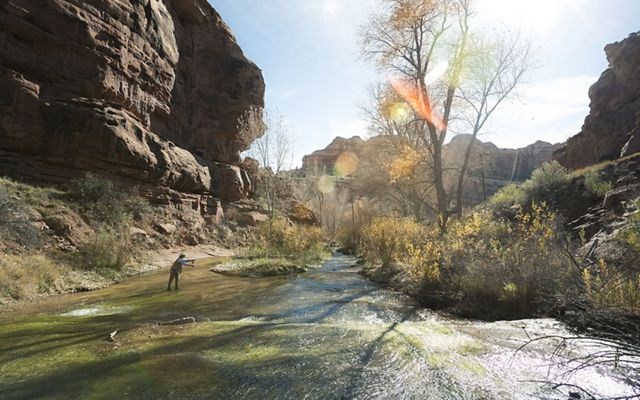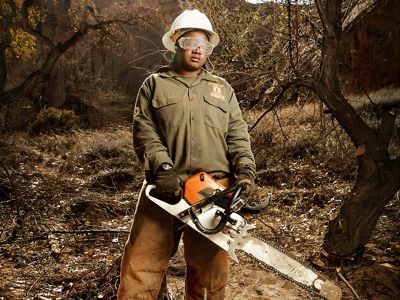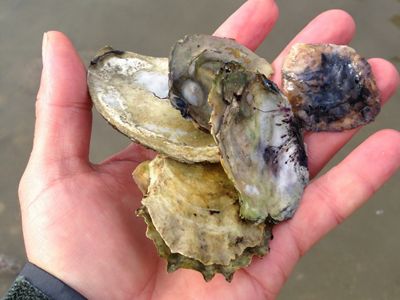Conservation Up Close
It’s the little details behind the big wins that matter the most.
Creating a more sustainable future for our planet is a monumental undertaking. Global challenges like climate change and massive species loss are daunting and extremely complex. As the world’s leading conservation organization, The Nature Conservancy tackles today’s biggest challenges through sweeping land deals, innovative marine protection strategies and groundbreaking partnerships.
Conservation at this grand scale is what our planet needs, and what we’ve been doing for more than 65 years. But look closer behind the scenes and you’ll see a different story–one that’s all about the little things that matter and the hard work that makes lasting progress possible. The key to long-term conservation success lies in the details.
How to Revitalize our Coral Reefs? An Inch of Coral at a Time
Reef-building corals are a keystone species of marine ecosystems. Coral reefs buffer coastlines from erosion and provide habitat for a wide variety of marine life. But since the 1980s, coral populations have plunged by almost 97 percent.
Florida’s coral reefs face disease, coral bleaching, and other threats. The Nature Conservancy lends expertise to coral reef conservation and management throughout the 360-mile-long reef tract, and has been engaged in coral reef restoration since 2004. Those restoration efforts include the reef in Dry Tortugas National Park, a small cluster of islands in the Gulf of America only accessible by boat, where TNC has been planting thousands of young corals to the reef, an inch at a time, with great success.
Here’s how it works: Years ago, our dive team cut four-inch long pieces of coral from healthy colonies to be placed in our underwater nursery – these corals have continued to thrive and provide coral pieces to be replanted to reef sites where they can flourish and revitalize the reefs. And now, imperiled corals are brought to the nursery to grow for placement back to the reef in the future.
The project continues to be an immense victory for conservation — the team has housed thousands of corals in our nursery and planted more than 6,500 individual corals on degraded reefs in Dry Tortugas — that’s a lot of inches of corals! And that’s just a part of it: TNC has supported coral restoration efforts throughout Florida’s waters.
How to Restore the Gulf Coast? Start with Protecting a Tiny Sea Turtle
The Gulf Coast has been battered by hurricanes and devastated by oil spills. The 2010 Deepwater Horizon oil spill polluted more than 1,000 miles of pristine Gulf Coast shoreline and killed thousands of marine animals, including almost 20 percent of the juvenile population of the endangered Kemp’s ridley sea turtle.
The Kemp’s ridley sea turtle is the smallest and most critically endangered sea turtle species. Historically, they’ve also suffered from nesting disturbance, beach erosion and coastal development. Protecting their nesting sites is vital, and there is no place more important than Padre Island off the coast of Texas.
In 2019, The Nature Conservancy acquired 6,200 acres of critical nesting habitat for the Kemp’s ridley sea turtle on South Padre Island, adding to the 25,000 acres we originally secured back in 2000. The Padre Island dunes, coastal prairies and wind tidal flats not only provide habitat for Kemp’s ridley sea turtles, but also for 16 other wildlife species that have federal or state conservation status, including the peregrine falcon and piping plover.
We’re making a difference for the world’s smallest sea turtle, and all of the other threatened creatures that rely on undisturbed habitat along the Gulf Coast.
How to Help an Iconic River Flow Freely? Removing One Tree at a Time
The Escalante River winds through southern Utah canyons and is home to more than 200 species of migratory birds. The river is the lifeblood of the small towns that dot the landscape, providing recreation, agriculture, and sense of natural beauty cherished by residents. But the beautiful scenery was overrun by invasive Russian olive trees, altering dynamics of water flow and damaging wildlife habitat.
The Nature Conservancy stepped in to help organize and lead a diverse cohort of stakeholders, The Escalante River Watershed Partnership (ERWP), in tackling river restoration. The bulk of the work was done by youth corps that lugged heavy equipment, hiked countless miles, and worked long hours and several days in a row — with the goal of removing one invasive tree at a time.
Little by little, the ERWP crew successfully removed dense thickets of Russian olive from all 90 river miles, restored native fish species to over 30 miles of historic habitat, and reconnected or improved more than 80 miles of fish habitat. The collaborative effort brought together more than 190 local landowners, and ERWP has grown to include 20 official partners that will continue to monitor revegetation, re-treatment and invasive species control.
Today, native cottonwood trees and willows are making a comeback along the banks of the Escalante–it’s hard to picture the overgrown riverbeds that used to choke this waterway.
How to Improve Water Quality? Billions of Tiny Bivalves
Nutrient pollution from excess nitrogen and phosphorus in the Chesapeake Bay has degraded water quality, affecting watersheds, habitats and fisheries. But, there’s a powerful small shellfish that’s restoring the ecosystem bit by bit: oysters.
Oysters are tiny powerhouses that filter water and serve as natural buffers against coastal erosion. Not only do they enhance water quality, but they protect the coast against storm surges and sea-level rise while providing habitat for an abundance of iconic local species such as blue crabs and striped bass.
These mighty mollusks are able to improve water quality by filtering up to 50 gallons of bay and ocean water each day by recycling nutrients.
But oysters are in trouble. They’ve dramatically declined and populations are currently at less than one percent of their historic numbers. That’s why The Nature Conservancy is revitalizing oyster reefs that are essential to the health of entire ecosystems in places like Harris Creek Oyster Reef in the Chesapeake Bay.
The Nature Conservancy and partners completed the largest-ever oyster reef restoration project in Maryland’s Harris Creek, planting over 2 billion oysters across 350 acres. Harris Creek is a vital tributary to the nation’s largest estuary, the Chesapeake Bay. TNC scientists worked hand-in-hand with academia to develop new monitoring techniques that measure water filtration and nutrient removal capacity of oyster reefs.
The results demonstrated that the restored reef at Harris Creek has the potential to remove one million pounds of potentially-harmful nitrogen from the Chesapeake Bay over a decade. Even more impressive, the restored reefs can filter the full volume of Harris Creek in less than ten days during the summer months.
The Harris Creek oyster restoration project is a prime example of how many individual partners can come together to drive large-scale conservation gains. With Harris Creek, we are proving that oyster reef restoration is a viable natural solution to water quality challenges where each individual oyster is doing its part to clean the Bay.
How to Safeguard a Fragile Landscape? Finding Flowers from the Sky
The magnificent deserts of southern Utah contain some of the most fragile habitats in the U.S., and are stressed by off-road vehicle use, increased development and other human impact.
One unique ecosystem is home to one of the rarest flowers in the world, the dwarf bear poppy, and it’s only found in a few areas in southwestern Utah, including The Nature Conservancy’s White Dome Nature Preserve, an 800-acre preserve opened in 2016.
Endangered since 1979, the desert flowering poppy plant lives primarily in the Moenkopi Formation — a specific geologic layer with easily disturbed soils. Foot and vehicular traffic destroys the plant. They cannot be transplanted, nor do they survive cultivation.
So, how do we monitor these fragile plants without harming them? Drones.
The Nature Conservancy worked with scientists who used technology in the sky to calculate populations, study habitat and collect new information—in an impact-free way. The drones have mapping software and imagery capability to locate, count and measure individual poppies, allowing scientists to get a close-up look at the plants in a way that was never possible before. It’s meaningful data that can be used to help protect this vast and fragile landscape.
Celebrating the Small Details
Nature’s biggest challenges can often feel daunting but we’re confronting them head-on, one step at a time. It’s the collaborative spirit and hard work that makes an impact at a measurable scale.
We’re celebrating the small details and little moments that you’ve been a part of — an inch of coral planted, one invasive tree removed, one tiny sea turtle saved — each one made possible thanks to donor support and our team of on-the-ground experts and partners behind the scenes.
As we look ahead together to the work we must do in the next decade, it’s critical to build on the triumphs and victories for nature, and we hope that you’ll stand with us again in the coming year.
Help Protect All the Little Things That Matter
Stand with us and celebrate the small details














